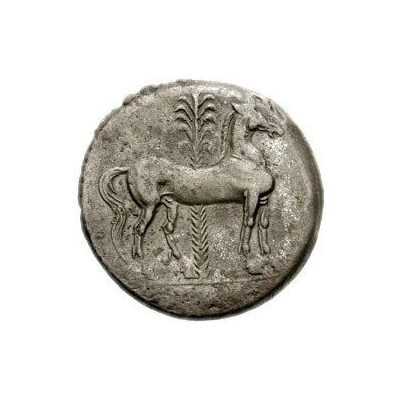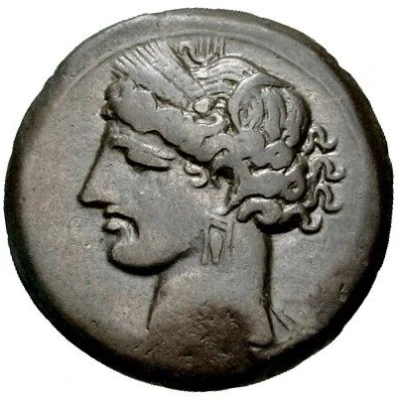


© Classical Numismatic Group, Inc.
Trihemishekel 240 BC - 230 BC
| Billon | 10.7 g | 26 mm |
| Issuer | Carthage (Zeugitana) |
|---|---|
| Type | Standard circulation coin |
| Years | 240 BC - 230 BC |
| Value | 1½ Shekel (1.5) |
| Currency | Shekel |
| Composition | Billon |
| Weight | 10.7 g |
| Diameter | 26 mm |
| Shape | Round (irregular) |
| Technique | Hammered |
| Demonetized | Yes |
| Updated | 2024-10-09 |
| Numista | N#331025 |
|---|---|
| Rarity index | 100% |
Reverse
Horse standing right; in background, palmtree
Interesting fact
The Trihemishekel coin was used as a form of currency in the ancient city of Carthage, which was located in present-day Tunisia. The coin's design features a stunning image of a horse and rider, which symbolizes the city's rich history of trade and commerce. The coin was made of Billon, a type of alloy that consists of a mixture of metals, and weighs 10.7 grams. Despite its age, the Trihemishekel coin remains a popular collector's item among numismatists and historians, offering a glimpse into the economic and cultural practices of ancient Carthage.



